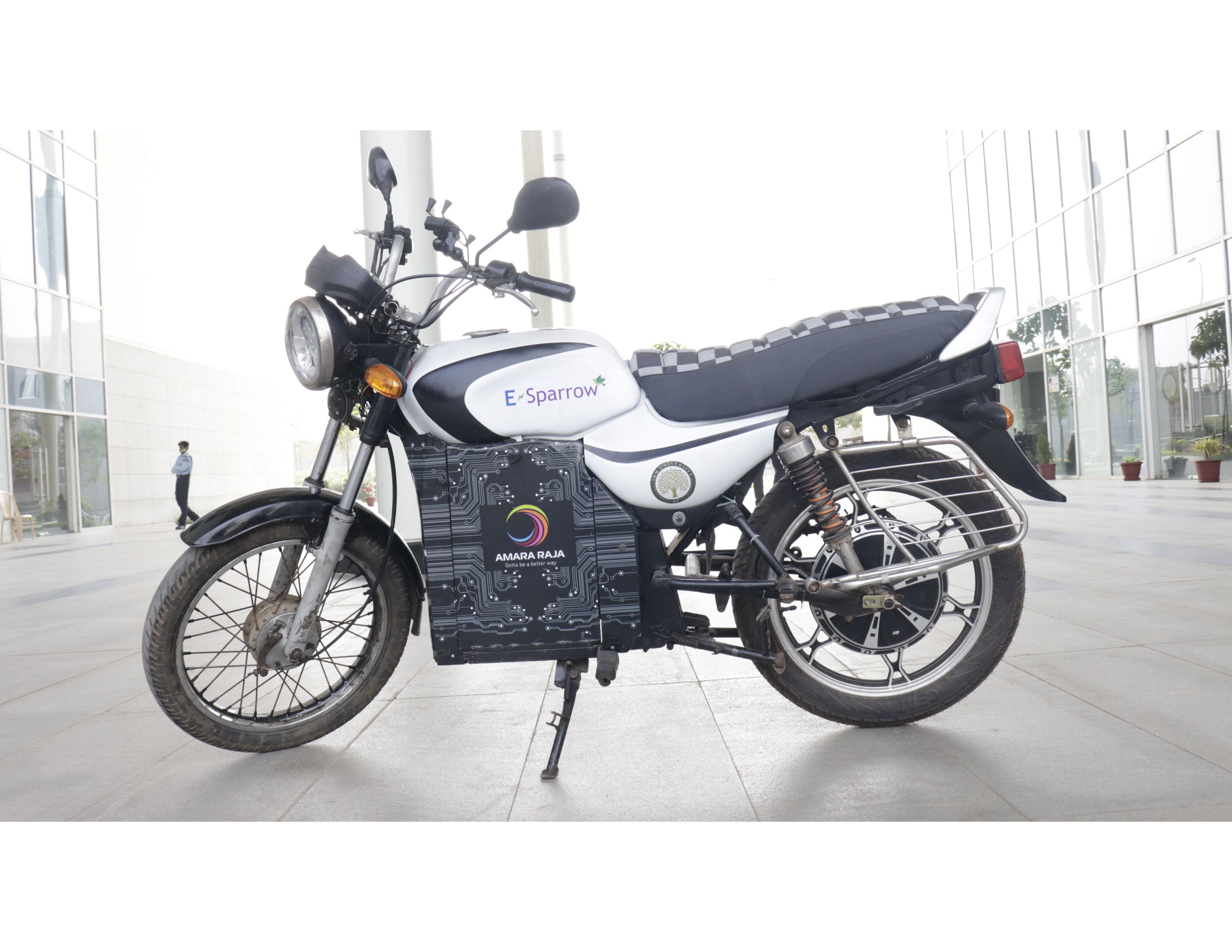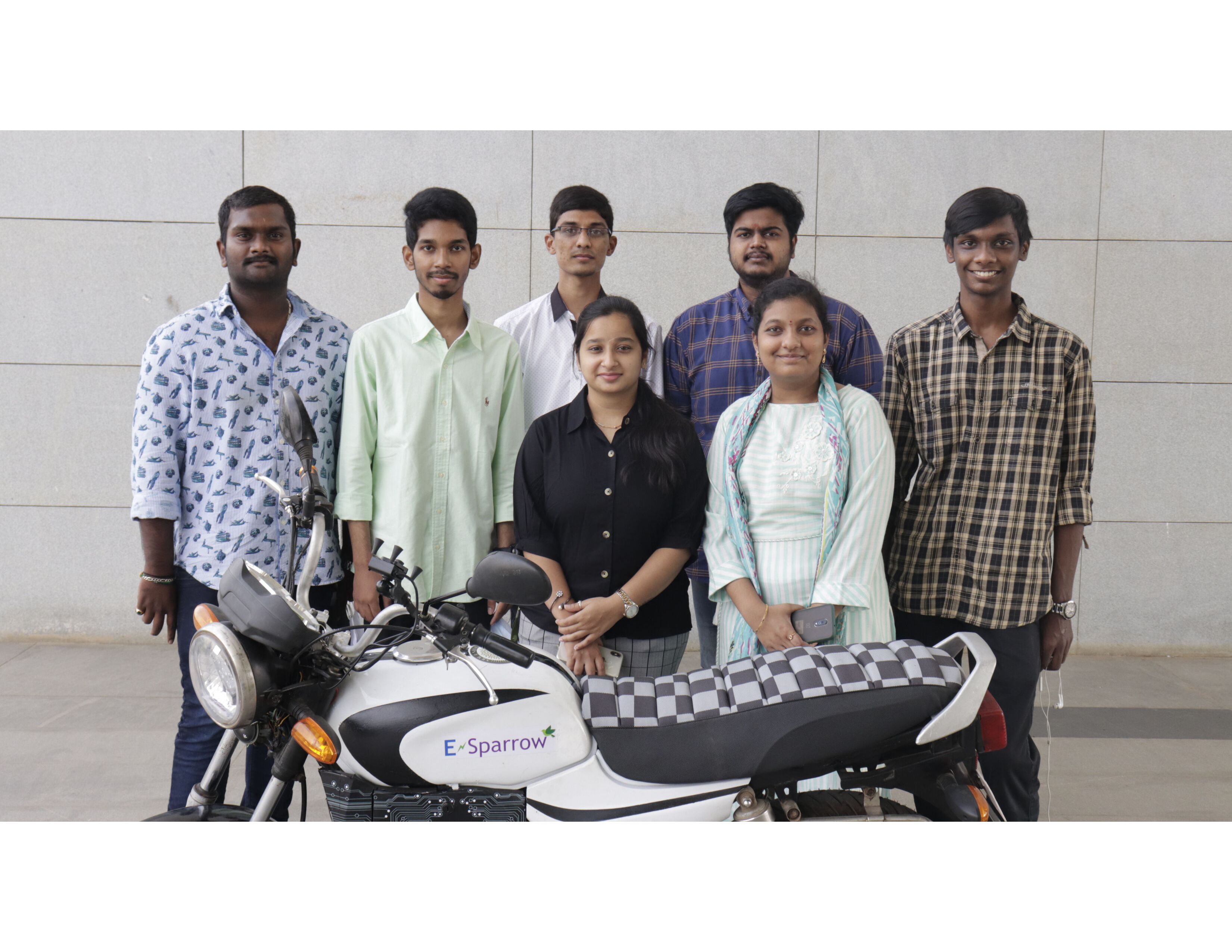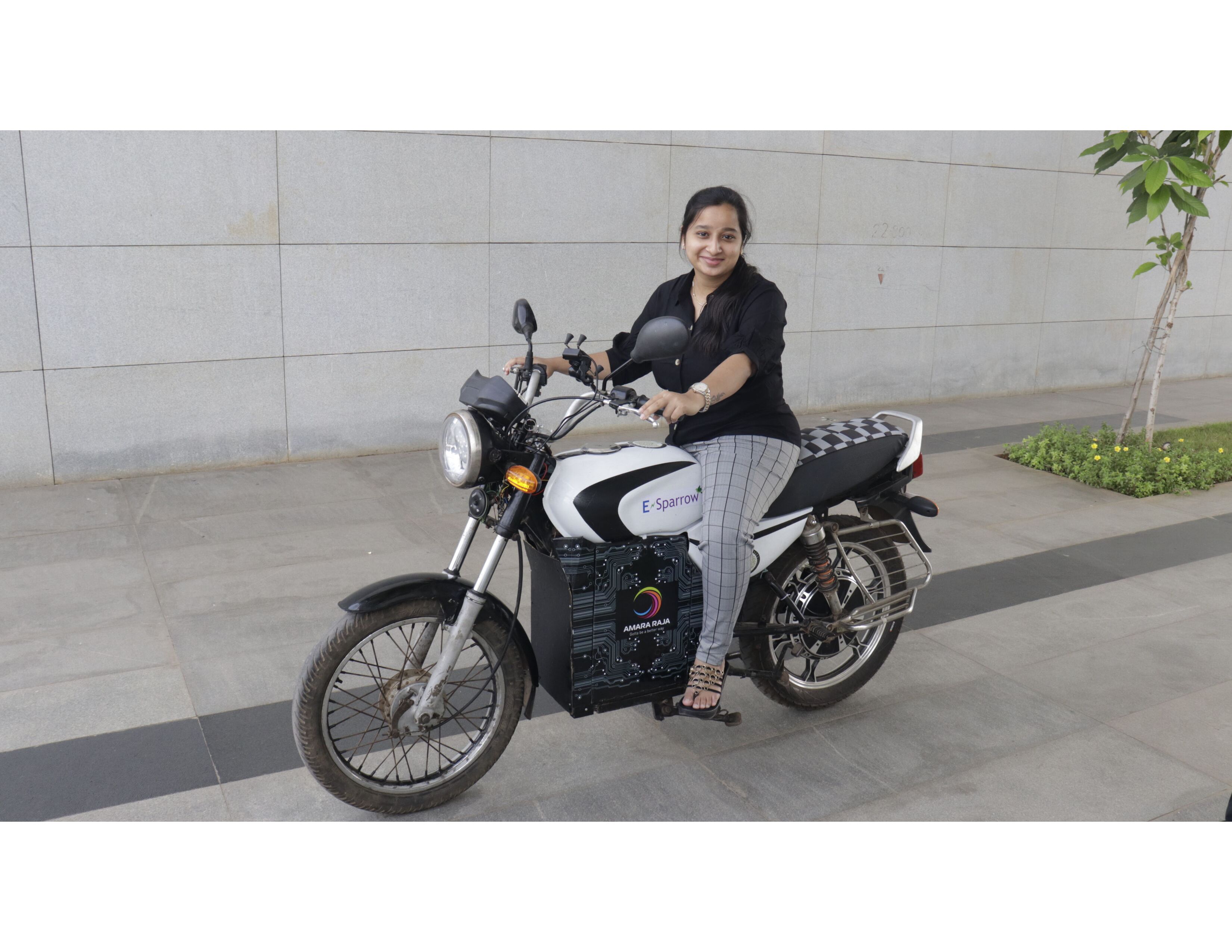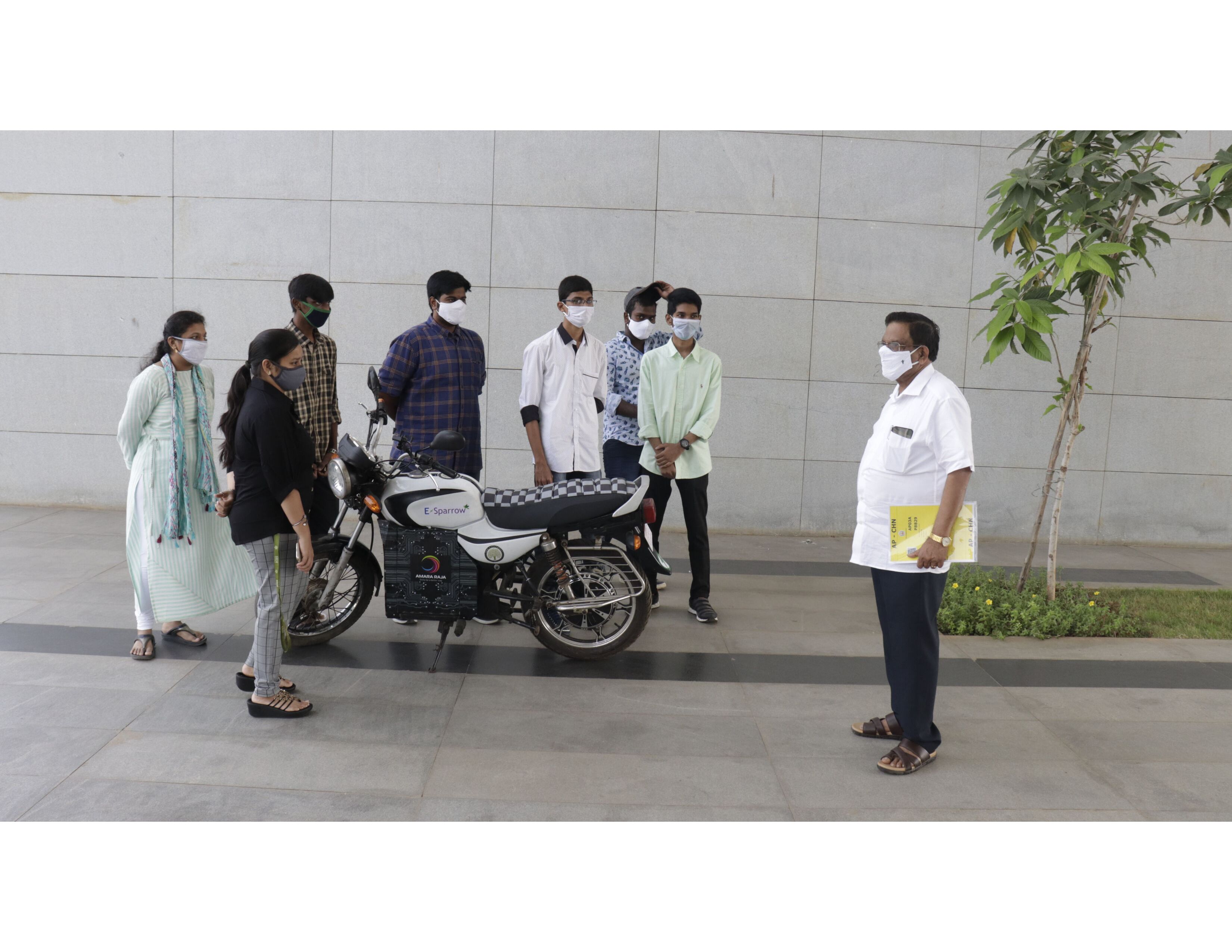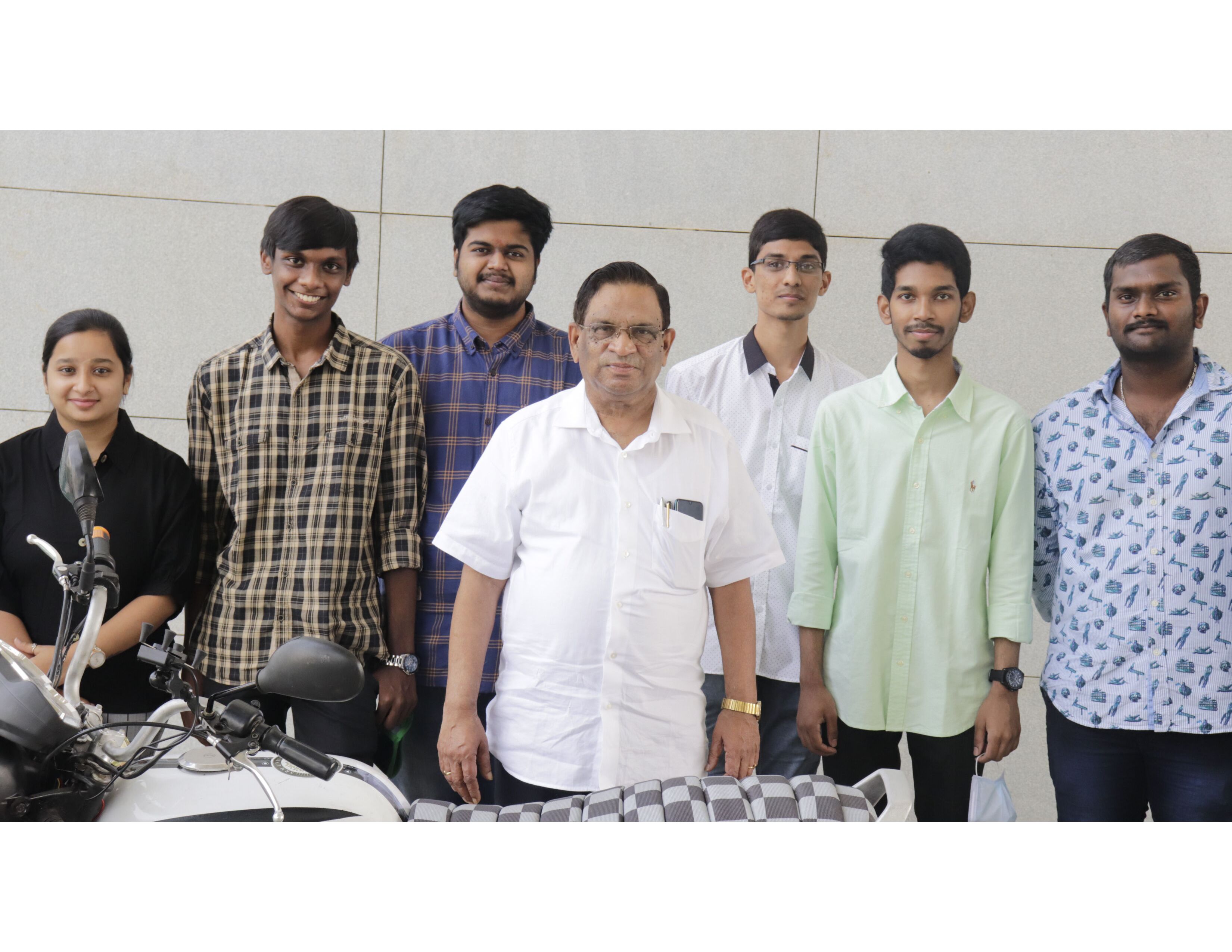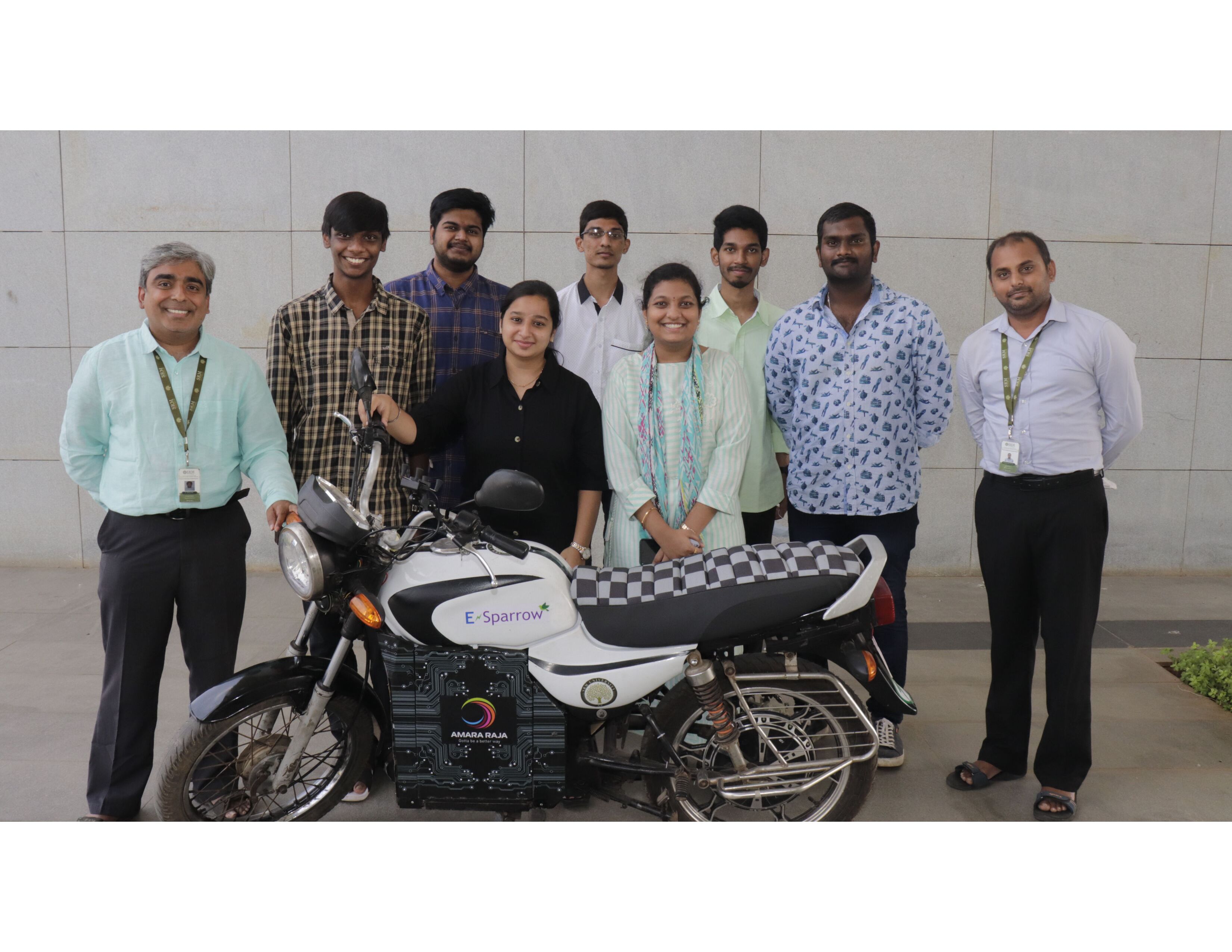Undergraduate students design e-bike for sustainable environment
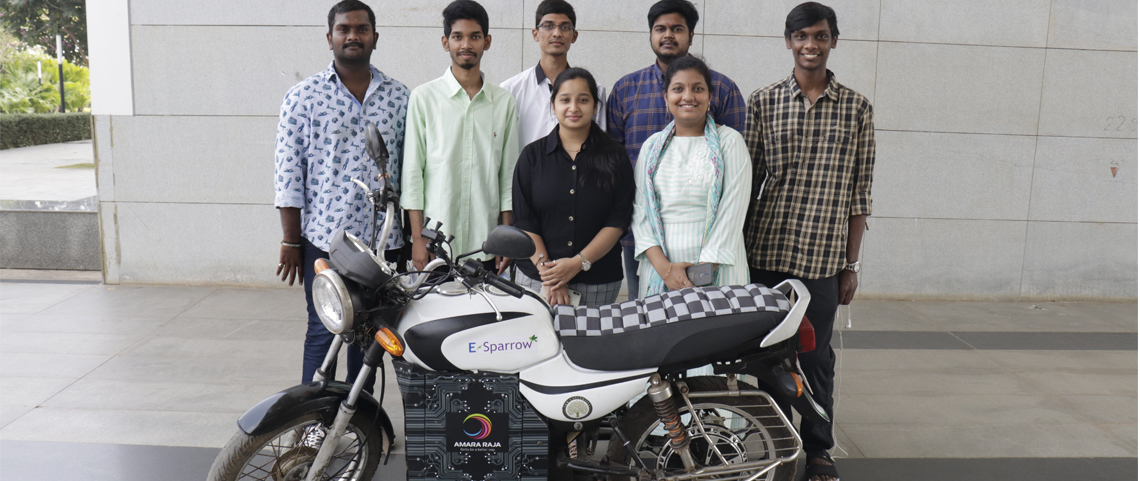
Advancing the celebration, Prof D Narayana Rao, Pro Vice-Chancellor, SRM AP took the virtual podium to comment “Science and Technology is the driving force for the economic development of India. We need to encourage young scholars by providing a vibrant and conducive research environment. Expanding the frontiers of knowledge by triggering interest among students must be the priority of the institutions. Also, focus should be on translational research with societal applications through collaborative research to make our nation a global leader.”
The team comprises of undergraduate students – Mr Raviteja Reddy, Mr A Chaitanya, Mr P M Aditya, Mr K Praveen, K Yeshashwini, A Sravya, K Vasu, and G Priyanka along with faculty members – Dr Venkata N Nori, Associate Professor, and Dr Panchagnula Jayaprakash Sharma, Assistant Professor, Department of Mechanical Engineering. Aditya reveals, “We endured several challenges in various aspects of retrofitting the conventional petrol motorcycle. Also, designing a portable battery system, enhancing the performance of the Hub motor, Chassis improvements, etc. enriched our understanding of electric vehicles and manufacturing techniques.”
Conversion of IC engine bike to an e-bike is considered to be a potential business venture by the team. Sharing their forthcoming plans, Aditya informs, “We are working on additional designs and ideas to incorporate the best possible features to make the e-bike more reliable. We heartily thank Prof D Narayana Rao, Pro Vice-Chancellor, for his continuous support. Also, Dr Venkata Nori and Dr Jayaprakash propelled us to create a steadfast model by relentlessly helping us in improving our design to make our model more cost-effective.”
- Published in Mechanical Engineering NEWS, News, Research News
Undergrad student receives envious internship offer from Adobe India with 1 LPM
 Khushboo Sharma is one of the brightest gems in the Department of Computer Science and Engineering. She is currently pursuing her third year in undergraduate studies. She has recently bagged an envious summer internship offer at one of the most reputed companies- Adobe India, a multinational software company. Through their women-only hiring challenge “SheCodes”, Khushboo not only bagged an internship offer but she may also have an opportunity of a Pre Placement Offer, upon successful review after this internship with attractive pay package. She will be joining Adobe India in May 2021 for the internship of 10-12 weeks with a stipend of 1 lakh rupees per month.
Khushboo Sharma is one of the brightest gems in the Department of Computer Science and Engineering. She is currently pursuing her third year in undergraduate studies. She has recently bagged an envious summer internship offer at one of the most reputed companies- Adobe India, a multinational software company. Through their women-only hiring challenge “SheCodes”, Khushboo not only bagged an internship offer but she may also have an opportunity of a Pre Placement Offer, upon successful review after this internship with attractive pay package. She will be joining Adobe India in May 2021 for the internship of 10-12 weeks with a stipend of 1 lakh rupees per month.
Mr Vivekanandan, Assistant General Manager, Department of Corporate Relations and Career Services (CR&CS), says “It is a proud moment for the university. SRM University-AP is full of bright students with huge potential. It is our sincere responsibility to bring out the best in them and help them find the right place in the industry.” Khusboo asserted that the training process in the Department of CR&CS was rigorous. Be it attitude development or interview preparations, the CR&CS department has extended continuous guidance and support along with mock sessions. Mr Vivekanandan further informed that the training programmes of SRM University-AP are designed by the experts to make students prepare for every challenge that they might face in a competitive world. They even organise some training sessions that are company-specific. Needless to say, that the placement department is not ready to leave any stone unturned when it comes to the future of its students. The placement team thoroughly guided Khushboo in the four-month-long hiring process in Adobe.
Khushboo expressed her gratitude, saying that it would not have been possible for her to crack this challenge without the continuous guidance and support provided by her teachers and the placement team. The modernised industry-oriented curriculum helped her gain the necessary in-depth knowledge to excel in her studies. Khushboo is also a part of tech-based clubs of SRM university-AP and always strives to think something out of the box. Her zeal towards scaling new heights and perseverance her made her achieve this offer.
- Published in CR&CS, CR&CS NEWS, CSE NEWS, Departmental News, News, Students Achievements
“Jumbo Catalyst” to resolve real-time catalytic challenges: SRMAP conceded the patent
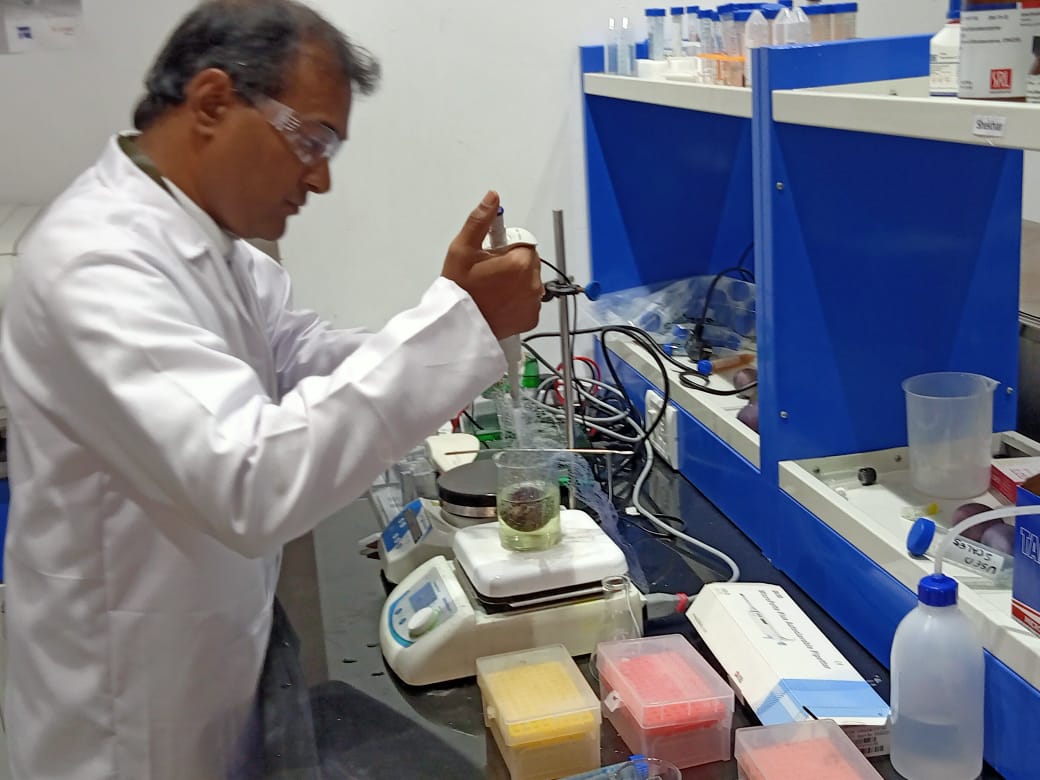 Dr Anil K Suresh is a renowned scientist in the area of Bio-Nanotechnology . The prestigious Ramalingaswami Fellow is now an Associate Professor at the Department of Biological Sciences, SRM University-AP. He recently developed an innovative catalyst that he named “Jumbo Catalyst” to address the demanding challenges in heterogeneous catalysis. This 3D-megacatalyst generated using “intact eggshell” food-waste is hand-removable with an overall surface area of ~ 78 cm2, featuring wide catalytic support and is highly stable in polar and non-polar solvents for ultra-efficient heterogeneous catalysis. This megacatalyst can overcome the existing limitations such as cost, time, labour, sustainability, mechanical stability, diverse-reactions, large-volumes, aggregation, recyclability and precursor recovery. Dr Anil K Suresh owns the copyrights for this pathbreaking invention through a published patent.
Dr Anil K Suresh is a renowned scientist in the area of Bio-Nanotechnology . The prestigious Ramalingaswami Fellow is now an Associate Professor at the Department of Biological Sciences, SRM University-AP. He recently developed an innovative catalyst that he named “Jumbo Catalyst” to address the demanding challenges in heterogeneous catalysis. This 3D-megacatalyst generated using “intact eggshell” food-waste is hand-removable with an overall surface area of ~ 78 cm2, featuring wide catalytic support and is highly stable in polar and non-polar solvents for ultra-efficient heterogeneous catalysis. This megacatalyst can overcome the existing limitations such as cost, time, labour, sustainability, mechanical stability, diverse-reactions, large-volumes, aggregation, recyclability and precursor recovery. Dr Anil K Suresh owns the copyrights for this pathbreaking invention through a published patent.
Catalysis is widely used in various industrial processes to produce desired end products. Research in this area substantially evolved from using organic reagents and metals to the adaptation of metal-based nanoparticles. Supported catalysis is a fast-emerging class of catalysis using inert and supportive frameworks with a potential for efficient reuse and recovery of the catalyst. Synthesis of metal-organic frameworks, fibres, polymers and hydrogel-based catalytic nanoparticle loadings are being reported. However, these are associated with intrinsic complexities and are produced using toxic ingredients, ecologically unbenign and are expensive.
The megacatalyst, generated by Dr Anil and his team using eggshell food-waste in the process, is autogenic, facile, cost-efficient and entirely biodegradable. Dr Anil strongly believes that theirs is the biggest catalyst developed so far. The intact eggshell provides an extensive support area for ultra-efficient catalysis. Applicability of this megacatalyst is so simple that even a layman can use it with ease. Moreover, this supported megacatalyst can be effortlessly removed from the reaction mixture post application as it can be recovered by hand. Catalytic reactions using the megacatalyst can be controlled as the tuff, and uniform coating protects the shedding of nanoparticles. Dr Anil Says, “We presume that the mega-size of the catalyst could be instrumental in several challenging applications. As a proof of concept, we selected three eclectic applications including- 1. Large volume sewage dye degradations, 2. Gram-scale hydrogenation of nitroarenes and 3. Transesterification of used oil to biodiesel- which are all difficult to achieve, highly challenging but are now practically feasible using our megacatalyst.”
“Keeping in mind the ultra-catalytic proficiency of our catalyst that can be simply resourced from continuously available eggshell waste, with minimal maintenance for the large scale practical implementation, we welcome interested beneficiaries from diverse heterogeneous catalysis sectors for bringing this innovation to execution,” Dr Anil asserted.
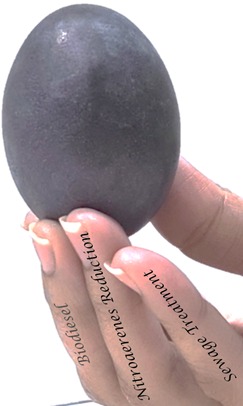 The team is currently investigating to design and fabricate other species of megacatalyst using other significant metal precursors and earth-abundant metals to expand the applicability in allowance of diverse reactions such as oxidation of CO, Methane, Mono/Polyhydric alcohols, hydrogenation of alkynes, Nitroaromatics and CO2.
The team is currently investigating to design and fabricate other species of megacatalyst using other significant metal precursors and earth-abundant metals to expand the applicability in allowance of diverse reactions such as oxidation of CO, Methane, Mono/Polyhydric alcohols, hydrogenation of alkynes, Nitroaromatics and CO2.
Dr Anil K. Suresh concluded that this breakthrough conception would not have been possible without the rigorous efforts of his team and the continuous support from the university management. Dr Anil Suresh thanked his PhD students Chandra Bhatt, Divya Parimi, Tharun Bollu and Madhura. Dr Anil especially thanked Professor D Narayana Rao, Pro-Vice-Chancellor, SRM University-AP for his extensive support in all his scientific endeavours since his association with the university.
- Published in News, Research News
A book by Dr Lakhveer Singh featured in the list of Best Waste Management books
Converting waste to fuel: way forward to a resilient planet
 Dr Lakhveer Singh, Assistant Professor, Department of Environmental Science published a book titled “Waste to Sustainable Energy: MFCs – Prospects through Prognosis”. This book has been featured in the list of Best Waste Management books of all time by CNN, Forbes, and Inc-Book Authority. The book has been awarded this stature by venerated reviewers of the International Expert Committee, as well as global leaders of the discipline.
Dr Lakhveer Singh, Assistant Professor, Department of Environmental Science published a book titled “Waste to Sustainable Energy: MFCs – Prospects through Prognosis”. This book has been featured in the list of Best Waste Management books of all time by CNN, Forbes, and Inc-Book Authority. The book has been awarded this stature by venerated reviewers of the International Expert Committee, as well as global leaders of the discipline.
A Microbial Fuel Cells (MFC) bio-refinery treat water using microorganisms and converts waste products and byproducts into fuel. This entails efficient waste management along with contributing to the generation of renewable fuel, and products that foster sustainable development. Addressing the present challenges in waste management, bioenergy, bioproduct recovery, and commercial sustainability, this book on MFCs emphasize on an array of mechanisms, routes, and reaction engineering approaches for extensive transformation of waste to wealth.
Extensive use of fossil fuels for energy emits carbon dioxide and other harmful gases adversely affecting the environment and leading to soaring global warming. Subsequently, domestic, agricultural waste products from animal facilities, refineries, and industries cause a tremendous environmental burden. Energy systems from MFCs enable the treatment and recycling of wastes, preventing environmental problems, and offsetting the pollution loads. Dr Lakhveer informs, “We are aiming at ensuring a sustainable and resilient environment that eliminates any potential odds of future climate change. Though globalization has preceded the escalation in production processes, a significant quantum of the waste materials generated through these practices can be transformed into fuels with the help of MFCs. Efficacies of this mechanism would ensure a paradigm shift built on the principles of sustainability.”
This book focuses on the MFCs with various combinations of substrates generating bioelectricity with valued co-products. Essentially, the book provides fundamental ideas on MFC technologies, entailing various design and modeling aspects with examples. Further, the book illustrates distinctive aspects of basic sciences, reactor configuration, application, and market feasibility of MFCs. Critically assessing the feasibility of waste-powered MFCs for sustainable bioenergy production, the book highlights the tradeoff between resource needs and energy production. The extensive research and details in the book will help academicians, entrepreneurs, and industrialists to understand the scope and challenges empowering them to select unique, and specific integrated approaches in unit processes.
Advancing his research to mitigate environmental issues, Dr Lakhveer will continue to explore bioenergy, water treatment, bioelectrochemical systems, and nanomaterial synthesis for energy and water applications, and bioreactors development. Also, he is presently editing two books that address several environmental challenges.
- Published in News, Research News


